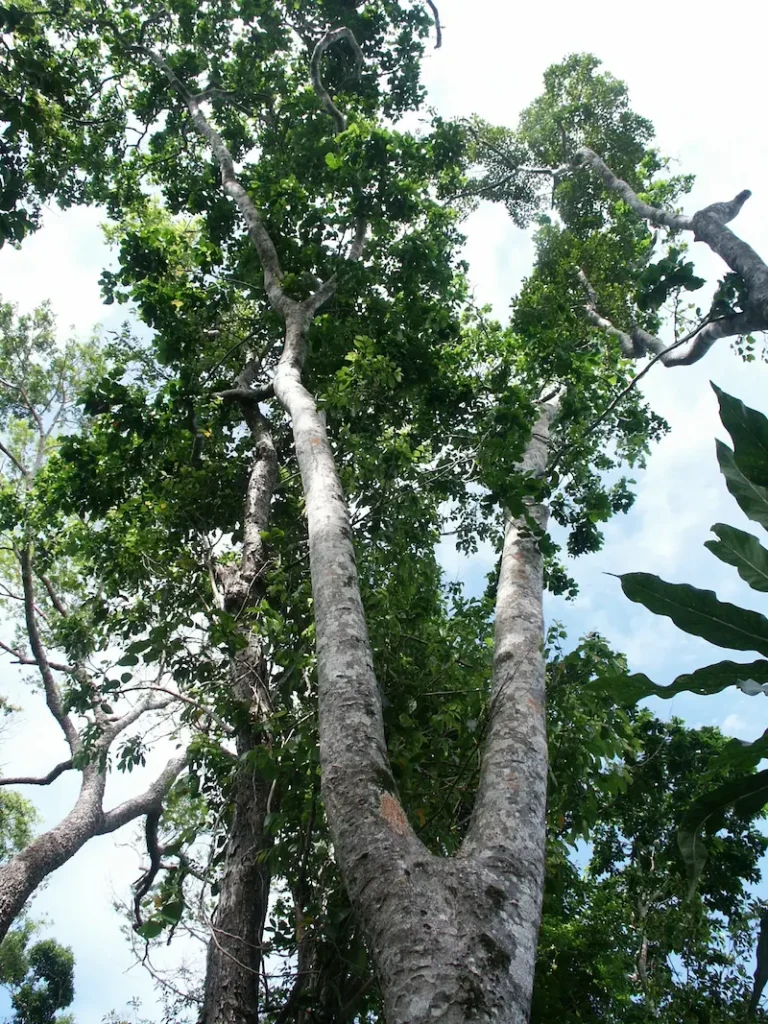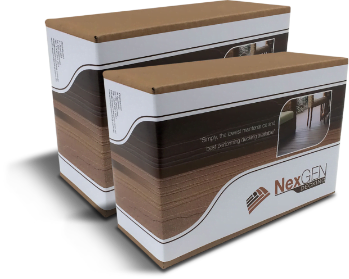Updated 22 July 2024
In the search for handsome decking alternatives, merbau decking timber has become a popular, go-to material despite its high price tag.
Sometimes called ipil or kwila, and scientifically known as Intsia bijuga, this southeast Asian native is renowned for durability, termite resistance, and an attractive appearance. However, using it comes with significant caveats.
Is merbau sustainable?
Merbau is not sustainable. Despite the popularity of merbau timber decking in Australia, there is a dark side to the harvesting and use of this luxurious hardwood.
The high demand from overseas markets has decimated this slow-growing species in many areas, and created a huge illegal forestry trade. Even legally harvested merbau timber will still have an impact on these populations.

Ethical reasons to avoid using merbau wood
Merbau is a vulnerable species
Merbau is found in tropical climates, many of which contain delicate ecosystems. Increased use of the material has led to Intsia bijuga being classified in 2020 as “near threatened” globally by the International Union for the Conservation of Nature (IUCN). This is the first level of their threatened species scale.
While merbau grows in multiple tropical locations and some can even be sourced from Northern Queensland, over harvesting (largely for residential building and development usage), illegal logging practices, and continued deforestation from human expansion has decimated the largest population in Indonesia’s West Papua province.
Continued deforestation without replacement will push the tree to the brink of extinction. In fact, Greenpeace has estimated that the merbau tree could be extinct by 2042 if logging is not reduced and conservation efforts are not increased.
Merbau trees have a poor regeneration rate
Even when merbau trees are harvested by legal logging procedures, the tree itself is not sustainable. The rate of consumption is not matched by successful regeneration.
Many merbau trees are old growth, with sparse populations even in their native regions. They are slow to mature as well – many of them can take up to 75 years or more to reach full maturity.
While they are tough trees, they are also prone to infection and damage in their young and growing stage… so the replacement plantings aren’t guaranteed to even reach full maturity, even with responsible forestry management.
Merbau timber logging is a dangerous industry
Illegal logging is used to skirt the systems put in place to protect the merbau tree. Logging it is not only harmful to the environment, but also damaging to local communities.
Illegal logging often has a higher rate of injury, no means of replacing the trees that are harvested, and no concern for the welfare of local communities.
The lower cost of illegally harvested merbau wood also hurts the loggers income and ability to provide for their families – these workers receive only a portion of the wages received by loggers working in legal forestry.
Harvesting merbau can destroy precious ecosystems
The Intsia bijuga tree is one of the foundations of many mangrove swamps, a unique and highly beneficial ecosystem that is important to Northern Australia and Southeast Asia. They form a transitional area and tend to inhabit the drier areas in the mangrove swamps.
These ecosystems are beneficial to the local communities – in a study, Finn Danielsen and his team determined that the effects of storm surges and tsunamis have been muted thanks to the ability of mangrove swamps to absorb wave energy. This is on top of the swamps providing a home to native wildlife such as shrimp, crabs, mud lobsters, and much more.
By removing merbau the rest of the established ecosystem becomes more vulnerable. With increasingly frequent extreme weather events, it is imperative we do not lose these natural defence systems.
Even more reasons not to build with merbau
Even if you didn’t know about merbau’s sustainability woes, there are other, very practical reasons to avoid picking a merbau deck for your home. It makes a mess, and it doesn’t stay looking like it does when you first install it.
Merbau tannins bleed and stain
Merbau wood has a lot of tannins in it. This is part of what makes it so durable and aesthetically pleasing for many, but the leaching of tannins from the wood can be harder to deal with than people anticipate.
During the ‘weathering’ period, and any other time it becomes wet if unsealed, merbau timber bleeds tannins. This causes reddish brown staining in surrounding areas – particularly those beneath or directly in contact with even the highest quality merbau decking.
Using this material for decking means accepting that part of your outdoor space will be stained, especially porous materials like stone or tile.
The dark timber colour fades
You choose specific decking timbers for a range of reasons. The aesthetic is an important part of this. Merbau is often favoured for its dark brown colour and gold fleck.
However, merbau timber fades to silver easily if you do not oil or seal it regularly. This is extra maintenance you must do just to keep your deck looking the way you want.
NexGEN Composite Decking: The best merbau alternative
Our range of hardwood-filled composite decking boards do not have any of the issues that merbau has. Here are some of the key benefits of using NexGEN composite products for your next decking project:
Composite decking is more sustainable
Composite boards are made from recycled plastic and other materials. The wood component in composite materials can come from sources such as sawdust, wood fibre pieces and wood chips reclaimed from the building industry. The end product can be recycled as well.
This lowers the overall environmental impact of the production and use of composite decking when compared to traditional timber, which is often grown using non-renewable practices.
Composite boards have a long lifespan
One of the major draw cards for using merbau decking in Australia is its termite resistance. However, so does composite decking. NexGEN’s composite decking features include:
- Water resistant
- Anti-slip and stays cool under foot
- Resistant to termites
- Splinter free
- Tested for all climates (including high heat, humidity, and high frequency soak / freeze / thaw environments)
Our composite decking panels are backed by a lifetime performance guarantee and a 50-year guarantee against all fading and staining. That’s longer than any timber decking would last, including a relatively durable material like merbau wood.
Extremely low maintenance decking
Compared to any traditional timber decking, composite boards are extremely low maintenance. There is never a need for oiling, sealing or painting. You also don’t need to weather the boards. Once they are in, you can start enjoying the space.
Before you commit to a lifetime (or 25 years, optimistically) of maintenance and leached tannins, we recommend browsing our stunning range of sustainable composite wood for decks instead.
Contact Us
Instead of going straight for merbau decking for your next project, contact us and find out what your best alternatives are. At NexGEN Decking, we design and produce durable, easy-to-use decking systems with minimal environmental impact.
Beauty, simplicity, and it doesn’t damage vulnerable ecosystems – what more could you ask for?

DO YOU WANT A
FREE SAMPLE PACK?
Can’t decide on a colour?
Fill out the form, and we’ll Express Post your free decking samples to you ASAP!
LET’S GET STARTED
ON YOUR PROJECT
Contact us to kick things off. This will be more fun than you think!
Products
Gallery
Contact
Direct Office Numbers
Adelaide – (08) 6316 0469
Brisbane – (07) 3041 6065
Melbourne – (03) 8672 6444
Sydney – (02) 8072 6220
